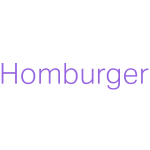On November 29 2021, the first bond was admitted to trading and listed on SIX Digital Exchange, the Swiss exchange for digital securities. This was the world’s first bond issuance with a pure digital part in a fully regulated environment.
SIX Digital Exchange is a stock exchange and central securities depositary for digital assets in Switzerland. It is regulated by the Swiss Financial Market Supervisory Authority (FINMA).
The issuer of this bond is SIX Group, the Swiss group that operates the infrastructure for the Swiss and Spanish financial centres. The managers of the bond were Credit Suisse, UBS and Zürcher Kantonalbank, which were the first three participants in SIX Digital Exchange.
This article provides a description of SIX Digital Exchange, a general description of the bonds that are listed on SIX Digital Exchange and specific information on some novel features of the first bond to be listed on SIX Digital Exchange.
Overview of SIX Digital Exchange
SIX Digital Exchange was approved by FINMA in September 2021. This authorisation allows SIX Digital Exchange to provide regulated, integrated trading, settlement and custody infrastructure based on distributed ledger technology for digital securities.
The main differences between SIX Digital Exchange and a traditional stock exchange are (i) that the SIX Digital Exchange itself also provides the custody, clearing and settlement services and (ii) that it operates these custody, clearing and settlement services by means of a distributed ledger.
The distributed ledger is run on the basis of nodes operated by SIX Digital Exchange on the one hand and the participants of SIX Digital Exchange on the other hand. This means that compared to the traditional set-up in Switzerland, SIX Digital Exchange fulfils the roles of SIX Swiss Exchange, SIX x-clear, SIX SIS and Swiss Interbank Clearing (SIC).
Instruments that can be listed on SIX Digital Exchange
Shares and bonds can be listed on and cleared through SIX Digital Exchange:
Shares are limited to shares issued by Swiss issuers.
Bonds can be issued by Swiss or non-Swiss issuers. The bonds must be issued in the form of uncertificated securities, denominated in Swiss francs and governed by Swiss law.
In addition, in respect of shares as well as bonds, the instrument must have an issuing and paying agent that is a participant in SIX Digital Exchange.
Payments (settlement and corporate actions)
All payments made through SIX Digital Exchange among the participants of SIX Digital Exchange (but not payments by issuers to the paying agent or payments by participants to the investors) occur on the basis of tokenised Swiss francs. This applies both to the settlement of trades on SIX Digital Exchange and to the payments under listed securities to the holders such as, in the case of bonds, interest payments and redemptions or, in the case of shares, dividend payments.
The participants of SIX Digital Exchange are responsible for obtaining sufficient tokenised Swiss francs in good time to make the payments they are involved in:In the case of trades on SIX Digital Exchange it is the participant acting on behalf of the buyer of the securities who needs to obtain sufficient tokenised Swiss francs to pay the purchase price.
In the case of the payments under listed securities, it is the participant acting as paying agent on behalf of the issuer who needs to obtain sufficient tokenised Swiss francs to effect the payments through SIX Digital Exchange to the participants for the benefit of the holders of the securities.
The participants can exchange Swiss francs for tokenised Swiss francs and change back to Swiss francs with SIX Digital Exchange at any time. They can thereby ensure that at all times they have sufficient tokenised Swiss francs for the payments on SIX Digital Exchange that they are involved in.
The participant effects the tokenisation by transferring Swiss francs from its Swiss franc account with SIC to SIX Digital Exchange’s account with SIC whereupon SIX Digital Exchange creates an equivalent amount of tokenised Swiss francs and credits these to the participant’s account in SIX Digital Exchange.
The de-tokenisation is the opposite process. Upon instruction by the participant, SIX Digital Exchange debits tokenised Swiss francs from the participants account in SIX Digital Exchange, transfers an equivalent amount of Swiss francs from its account with SIC to the participant’s account with SIC and cancels the tokenised Swiss francs that it has redeemed.
The tokenised Swiss francs are only in use between SIX Digital Exchange and the participants of SIX Digital Exchange. Accordingly, only participants need to be set up to be able to exchange and transfer the tokenised Swiss francs. All payments involving parties other than participants or SIX Digital Exchange occur only in Swiss francs. In particular:
Issuers of securities make the payments on the securities, such as interest payments, redemptions or dividends to the paying agent in Swiss francs.
Holders of securities are credited payments on the securities, such as interest payments, redemptions or dividends to their accounts with the participants in Swiss francs.
Purchasers of securities are debited in Swiss francs for such purchases by the participant they are acting through.
Sellers of securities are credited Swiss francs for such sales by the participant they are acting through.
Trades and atomic settlement
Buy and sell orders are entered by the participants on SIX Digital Exchange in the same way as on traditional exchanges. If the matching process results in a potential transaction, the distributed ledger checks whether the participants involved have sufficient assets and funds to settle the transaction.
If this is confirmed by the distributed ledger, the transaction is settled and the assets and funds are transferred simultaneously. If it is not confirmed, the transaction is cancelled, thereby ensuring that transactions are only concluded if they can be fully and immediately settled and a confirmation of the settlement is sent to all nodes in the distributed ledger.
The use of tokenised Swiss francs and the distributed ledger, which checks that participants have sufficient assets and funds for a planned transaction, allows transactions to be settled on SIX Digital Exchange directly between the participants involved and with immediate effect. Trading and settlement is simultaneous. SIX Digital Exchange refers to this feature as ‘atomic settlement’. This eliminates counterparty risk and makes a central clearing counterparty obsolete.
Regulations
The regulations of SIX Digital Exchange in respect of issuers are based on the regulations of SIX Swiss Exchange. To a large extent, the regulations are identical and the regulations of SIX Digital Exchange just refer to the regulations of SIX Swiss Exchange. For that reason, for an issuer, the listing of a bond on SIX Digital Exchange is not significantly different to the listing of a bond on SIX Swiss Exchange.
Participants
The regulations of SIX Digital Exchange in respect of participants differ significantly, due to the different structure of the two exchanges. For that reason, becoming a participant of SIX Digital Exchange is substantially different from becoming a participant of SIX Swiss Exchange and SIX SIS.
In addition, the inclusion of the clearing and settlement through the distributed ledger and the use of tokenised Swiss francs result in additional technical requirements. These necessitate more preparatory work to become a participant of SIX Digital Exchange compared to becoming a participant of SIX Swiss Exchange.
Nature of bonds listed on SIX Digital Exchange
The distributed ledger of SIX Digital Exchange constitutes a main register in accordance with the Swiss Federal Act on Intermediated Securities. This means that upon the entry of uncertificated securities in the distributed ledger of SIX Digital Exchange and the credit of the securities to the account of one or more participants of SIX Digital Exchange, the uncertificated securities constitute intermediated securities according to the Swiss Federal Act on Intermediated Securities.
|
|
“The first bond listed on SIX Digital Exchange shows that there is investor demand for such bonds in the Swiss market” |
|
|
The intermediated securities on the basis of uncertificated securities entered in the main register of SIX Digital Exchange are subject to the same rules as intermediated securities in a traditional set-up, such as intermediated securities based on permanent global notes deposited with SIX SIS or uncertificated securities registered in the main register of SIX SIS.
From an investor’s point of view, the intermediated securities held in SIX Digital Exchange are no different from intermediated securities held in SIX SIS. The securities held in SIX Digital Exchange also have security numbers, are also credited to the investor’s account with its bank and can be transferred based on an instruction from the investor to its bank.
Thus far, there is no difference between a traditional bond and a bond listed on SIX Digital Exchange. The ‘digital’ in this context refers to the distributed ledger technology behind the main register operated by SIX Digital Exchange.
As the securities can only be held in an account with a participant of SIX Digital Exchange, transfers are only possible to an account with a bank that (i) is a participant of SIX Digital Exchange and can hold the securities in SIX Digital Exchange directly or (ii) can hold the securities indirectly with SIX Digital Exchange through a correspondent bank which is a participant of SIX Digital Exchange.
Documentation of bonds listed on SIX Digital Exchange
The documentation of a bond to be listed on SIX Digital Exchange is very similar to the documentation of a traditional bond.
The contents of the prospectus are subject to the requirements of the Swiss Financial Services Act which apply irrespective of the exchange a bond is listed on or the clearing system a bond is deposited with. Further, there is no requirement to include a detailed description of the exchange or the clearing system. Therefore, the prospectus for a bond listed on SIX Digital Exchange will look almost the same as the prospectus for a bond listed on SIX Swiss Exchange, except for the specific references to the stock exchange and the clearing system.
The agreements entered into in connection with the issuance do not differ substantially from the agreements that are entered into in connection with a traditional bond. The paying agency agreement differs to some extent, insofar as it needs to be amended to reflect (i) the roles of the agent as issuing agent and as paying agent; (ii) the fact that SIX Digital Exchange also provides the custody, clearing and settlement services for bonds listed on it; (iii) the way that a bond is set-up in SIX Digital Exchange; and (iv) the way payments are effected through SIX Digital Exchange.
As discussed above, the rights of the investors against an issuer are the same whether the bond is listed on a traditional exchange or on SIX Digital Exchange. Accordingly, the terms of the bonds are not substantially different. The most significant difference is that the terms of the bonds refer to the SIX Digital Exchange in regard to listing as well as clearing and settlement as well as to the role of the agent as issuing agent and paying agent.
Special features of the first bond listed on SIX Digital Exchange
The bond issued by SIX Group AG and listed on SIX Digital Exchange contained some special features, which were included to make the decision to invest in a novel instrument more attractive for investors.
The bond was issued in two parts, one in a traditional set-up (listed on the SIX Swiss Exchange and cleared and settled through SIX SIS) and one listed on and cleared and settled through SIX Digital Exchange.
Investors have the right to switch between the two parts. They could therefore choose to buy a bond in the traditional set-up and have the option to change to SIX Digital Exchange or to buy a bond in the novel set-up and have the option to change back to SIX Swiss Exchange.
The terms of the bonds of the two parts are identical, except the references to the set-up applicable to each part. Each part has separate security numbers.
|
|
“The rights of the investors against an issuer are the same whether the bond is listed on a traditional exchange or on SIX Digital Exchange” |
|
|
To exercise the exchange right, a bondholder of one part has to submit an exchange notice and deliver the bonds it wishes to exchange to the agent. The agent then cancels the bonds delivered to it and – on behalf of the issuer – issues bonds of the other part. The agent delivers the newly issued bonds to the holder. So the exchange is technically effected by a reduction of one part of the bond and a corresponding increase of the other part of the bond, similar to exchanges between 144A and Regulation S tranches of certain bonds in the European market.
There are no restrictions in the terms and conditions of the bonds issued by SIX Group AG on how often a holder can exercise the exchange right. So far, however, there have only been a small number of exchanges. The exchanges are possible – subject to limited exceptions – anytime during the lifetime of the bond and are at no cost to the holders.
Based on a tax ruling that was obtained, the exchange is also not subject to any Swiss taxes, given that economically the investor even after an exchange still has the same bond and the same rights against the issuer thereunder.
Given that exchanges between the parts are possible at any time and, theoretically, the entire bond could switch into the traditional part or into the digital part, certain exceptions were required in respect to the listing rules. The relevant regulatory body of both SIX Swiss Exchange and SIX Digital Exchange is SIX Regulation AG.
According to these exceptions, the two parts are treated as one bond for listing purposes, given that, economically, the bonds of both parts are fungible, in particular:
The admission to trading and listing on each of SIX Swiss Exchange and SIX Digital Exchange also applies to the further bonds issued in connection with the exercise of an exchange right.
The cancellation of bonds and increase of bonds in connection with the exercise of an exchange right do not need to be published.
The minimum capitalisation requirements of each exchange apply to the bond as a whole and not only to the part of the bonds listed on each exchange from time to time.
This means that the exercise of an exchange right does not have any implications or require any formalities in respect to the listing or admission to trading of the bonds on either exchange.
Flexibility for investors
With SIX Digital Exchange, issuers now have the possibility to list securities on a stock exchange that is also a central securities depositary for digital assets in Switzerland, regulated by FINMA. The first bond listed on SIX Digital Exchange shows that there is investor demand for such bonds in the Swiss market.
If issuers prefer not to issue a bond entirely in the new set-up, there is the option of dual-part bonds, with one part listed on SIX Swiss Exchange and the other part listed on SIX Digital Exchange. This gives investors the possibility to switch between the traditional set-up and the modern set-up according to their requirements.

Daniel Haeberli
Partner, Homburger
T: +41 43 222 16 33
E: daniel.haeberli@homburger.ch
Daniel Haeberli is a partner at Homburger.
Daniel is in the banking and finance as well as in the capital markets team. His areas of expertise include derivatives, structured products and bonds as well as syndicated debt financing and financial restructurings. Daniel is also the co-head of Homburger’s TechGroup and regularly advises clients on blockchain related projects.
Daniel has a master’s degree in law from the University of Zurich and a LLM in corporate law from the New York University School of Law. He is mandated by the Swiss Structured Products Association SSPA as Director of Legal & Regulation and a member of the Appeals Board of the Swiss exchange BX Swiss.

Eduard De Zordi
Counsel, Homburger
T: +41 43 222 16 57
E: eduard.de_zordi@homburger.ch
Eduard De Zordi’s practice focuses on banking, financial and capital markets law. He specialises in offerings of debt securities and also advises on contract and company law.
Eduard is registered at the Bar of the Canton of Zurich and is an authorised issuers’ representative at the SIX Swiss Exchange.



